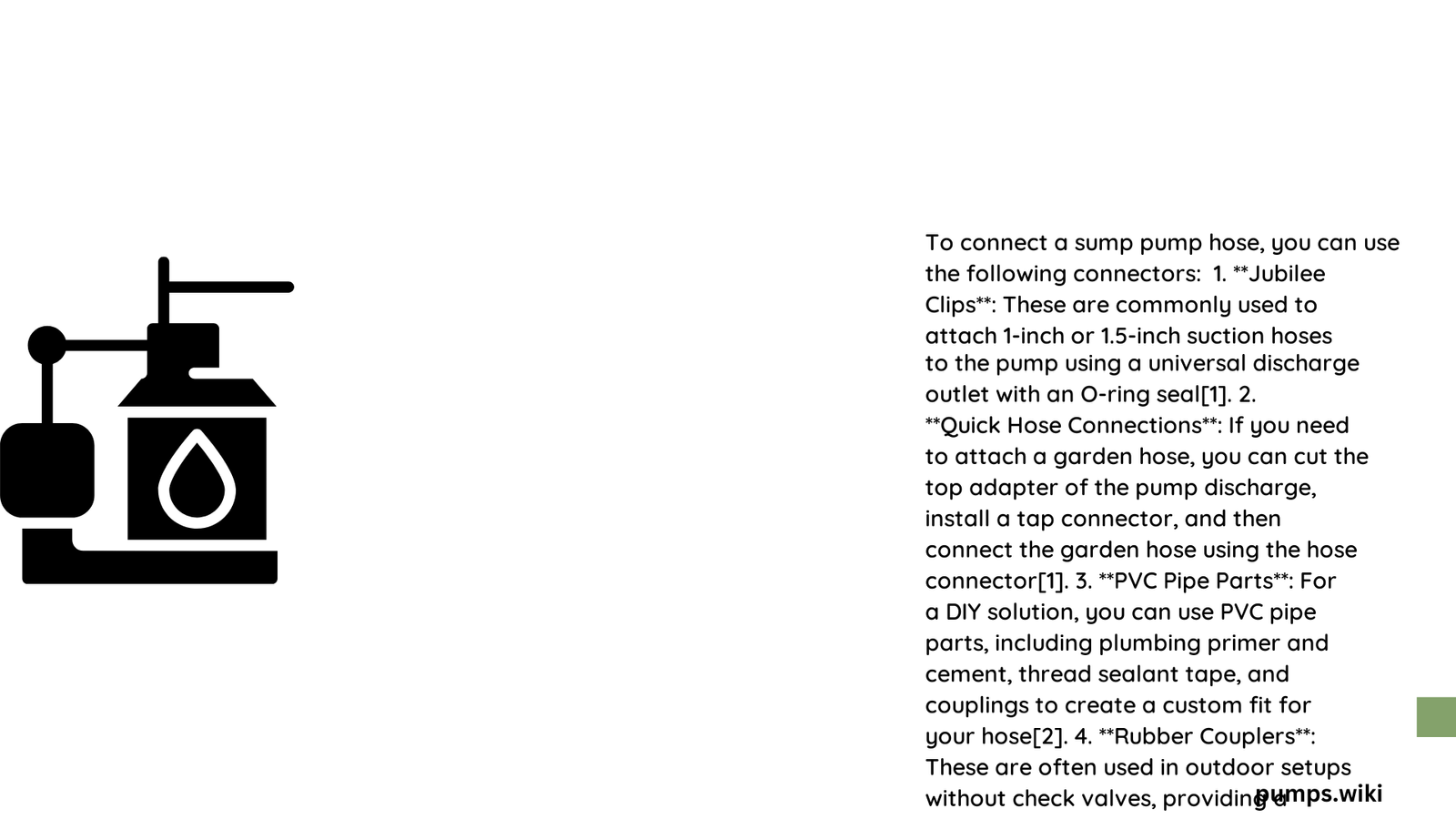Sump pump hose conecters are critical components that ensure proper water discharge and prevent leaks. These specialized connectors come in various materials, sizes, and types, including screw couplings, snap fittings, and adapters designed to create secure connections between sump pumps and discharge hoses. Understanding the right conecters can prevent water damage and ensure efficient drainage from your basement or crawl space.
What Are the Primary Types of Sump Pump Hose Conecters?
Sump pump hose conecters are essential for creating reliable water discharge systems. Here are the primary types of conecters homeowners and professionals use:
Screw Coupling Conecters
- Threaded Connections: Provide a tight, secure seal
- Materials: Typically made from:
- Brass
- Stainless steel
- Polyethylene
Snap Fitting Conecters
- Quick-Connect Design: Easy installation
- Advantages:
- Rapid attachment
- Minimal tools required
- Flexible positioning
How Do Material Choices Impact Sump Pump Hose Conecters?

| Material | Durability | Cost | Corrosion Resistance |
|---|---|---|---|
| Polyethylene | High | Low | Excellent |
| PVC | Medium | Low | Good |
| Brass | Very High | High | Excellent |
| Stainless Steel | Highest | Highest | Superior |
Key Considerations for Material Selection
- Environmental Conditions
- Water Chemistry
- Temperature Variations
- Budget Constraints
What Size Conecters Are Recommended for Sump Pump Hoses?
Most residential sump pump systems require conecters with the following specifications:
– Diameter Range: 1″ to 1.5″
– Thread Types:
– MNPT (Male National Pipe Thread)
– FNPT (Female National Pipe Thread)
– Recommended Adapters:
– Reducing sockets
– Threaded nipples
– Barbed adapters
How to Ensure Proper Sump Pump Hose Connector Installation?
Preparation Steps
- Measure pump outlet diameter
- Select compatible connector
- Clean connection surfaces
- Use appropriate sealing materials
Installation Techniques
- Apply thread tape or pipe sealant
- Hand-tighten initially
- Use wrench for final quarter-turn
- Check for potential leaks
- Test system under operational conditions
What Are Common Challenges with Sump Pump Hose Conecters?
Potential Issues
- Leakage: Improper sealing
- Corrosion: Low-quality materials
- Fitting Incompatibility: Mismatched sizes
- Pressure Limitations: Exceeding connector ratings
Prevention Strategies
- Use high-quality conecters
- Regular maintenance
- Professional installation
- Periodic system inspections
Expert Recommendations for Selecting Conecters
Top Selection Criteria
- Compatibility: Match pump and hose specifications
- Material Durability
- Pressure Rating
- Ease of Installation
- Cost-Effectiveness
Maintenance Tips for Long-Lasting Conecters
- Annual inspection
- Clean connection points
- Replace worn components
- Monitor for signs of wear
- Use protective coatings if needed
Conclusion
Selecting the right conecters used to connect sump pump hose requires careful consideration of multiple factors. By understanding material properties, sizing requirements, and installation techniques, homeowners can ensure efficient and reliable water drainage systems.
